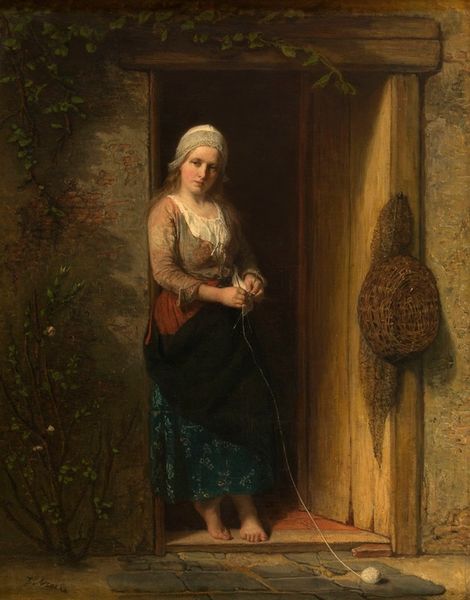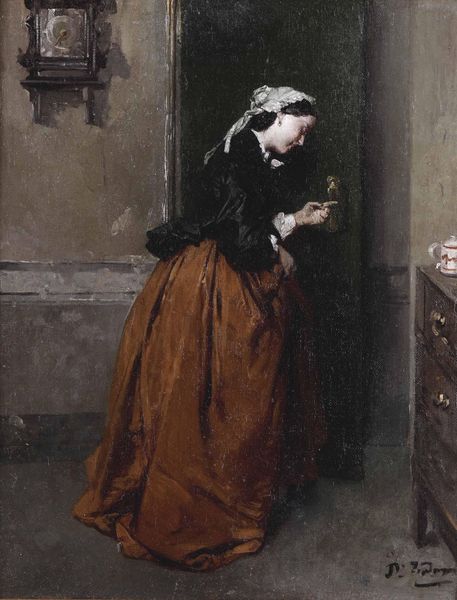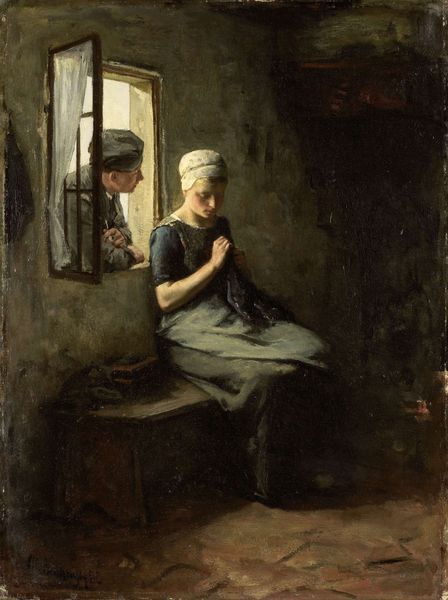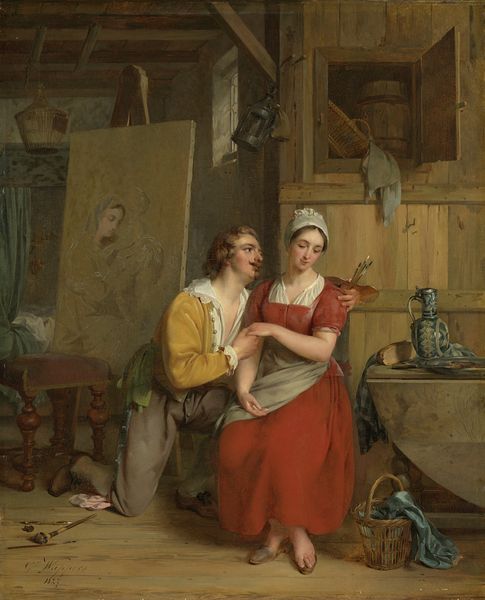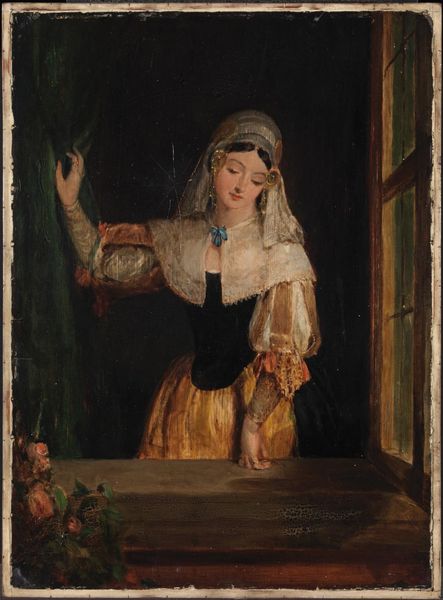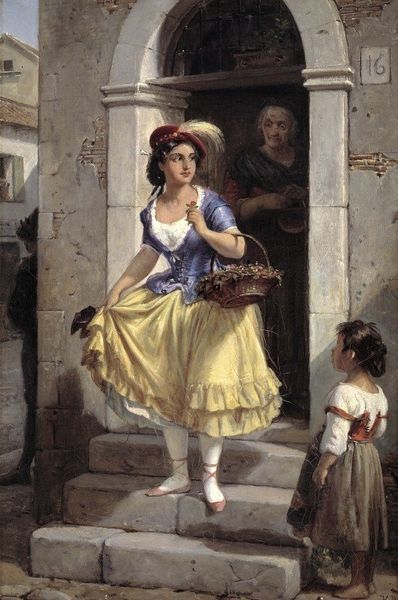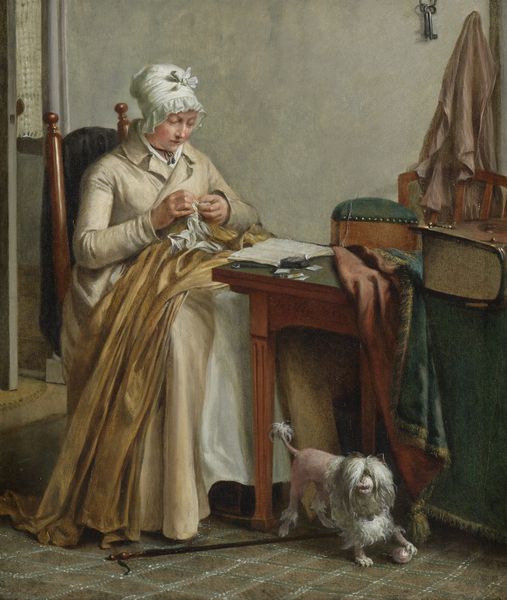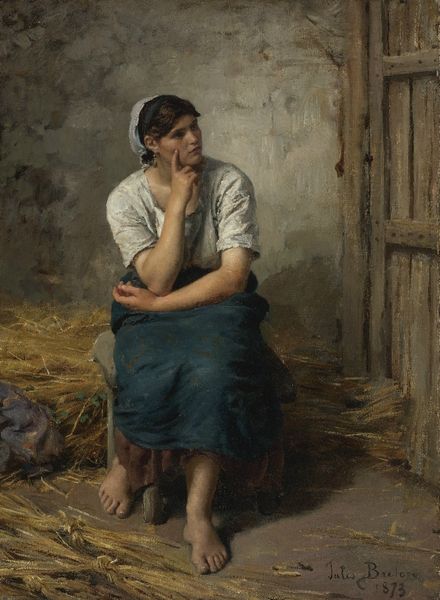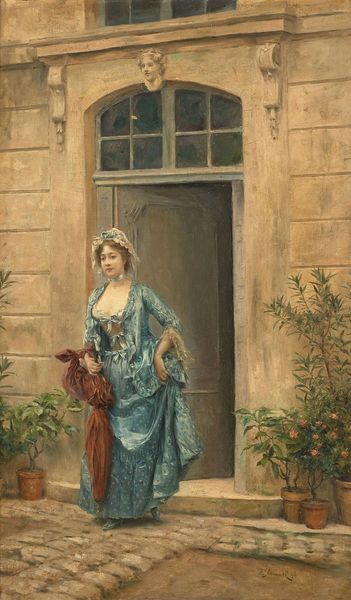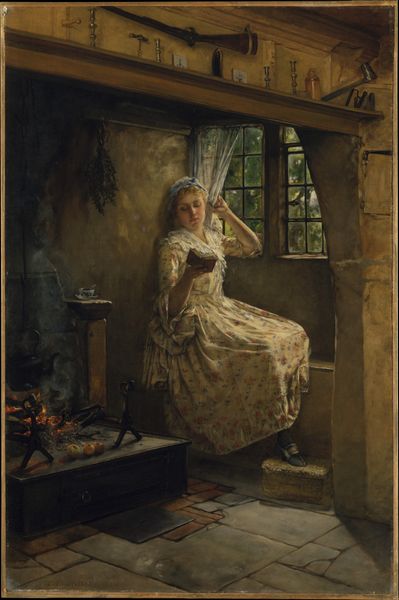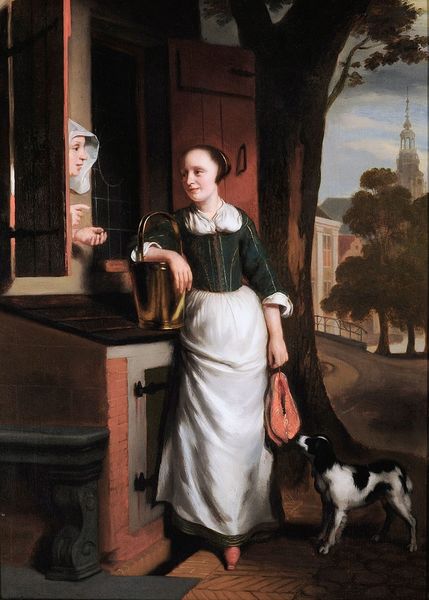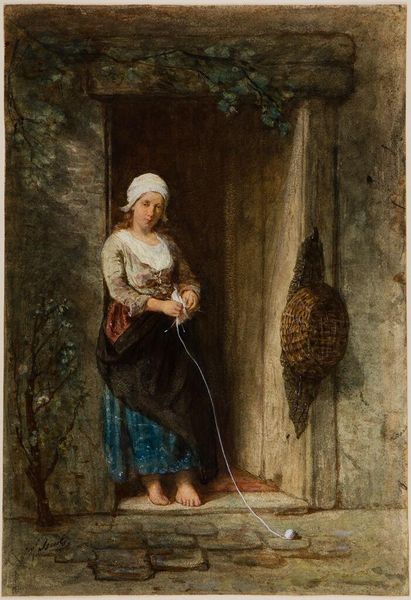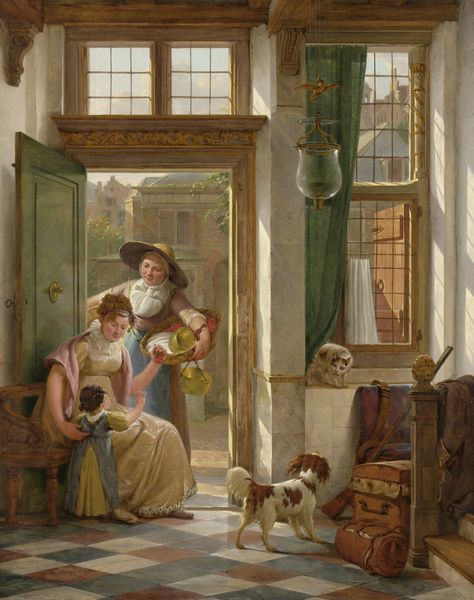
oil-paint
#
conversation-piece
#
portrait
#
character portrait
#
narrative-art
#
oil-paint
#
dog
#
landscape
#
figuration
#
romanticism
#
genre-painting
#
realism
Dimensions: height 41.3 cm, width 35.5 cm, thickness 3 cm, depth 9.5 cm
Copyright: Rijks Museum: Open Domain
Curator: This is "Love Note" by Johannes Hendrik van West, painted in 1838. It’s quite a charming genre scene. Editor: Charming is one word. I immediately notice the textures. The rough brick contrasting with the crisp cotton of her apron, even the slightly worn wood of the door. You can almost feel the differences. Curator: And that interplay of textures is deliberately constructed. Van West was working within the tradition of Dutch realism and romanticism, popular at the time, focusing on the everyday lives of ordinary people, but in this case we find it particularly charged. Think about how the depiction of such a scene helps craft a national identity or shared values at the time of its creation. Editor: So the presentation of everyday life elevated, given weight. To me, it looks as if labor and the material conditions of 19th-century domesticity are depicted through very precise brushstrokes. Note the almost clinical detail he applies to each object—the birdcage, the tile floor, even her worn slippers just inside the doorway. It feels meticulous. Curator: I agree. The details really do immerse you. Consider the placement of the woman, poised between inside and outside. How does this framing, the doorway itself, contribute to a larger narrative or to our understanding of social boundaries at that time? Editor: It's an interesting detail; domesticity seems like it is on display in the way it is positioned relative to nature, commerce, and life itself. Curator: Note also the small dog, clearly a companion. Its gaze mirrors ours, inviting us into the scene, or perhaps drawing attention to the woman, she's receiving some information, the "love note", we may only imagine the context for it. Editor: Right, even the gesture of her hand pressed to her cheek is telling. A silent narrative made so tactile through oil paint and canvas. And through his art making, the artist makes all those raw materials coalesce in an elevated social setting. Curator: Well said. It’s fascinating to consider how Van West uses the familiar to explore deeper, often unspoken, aspects of society. Editor: Absolutely. Each element of this scene acts as both signifier and tangible thing, deepening its narrative and revealing historical meanings that are sometimes forgotten in contemporary discussions about art.
Comments
No comments
Be the first to comment and join the conversation on the ultimate creative platform.
